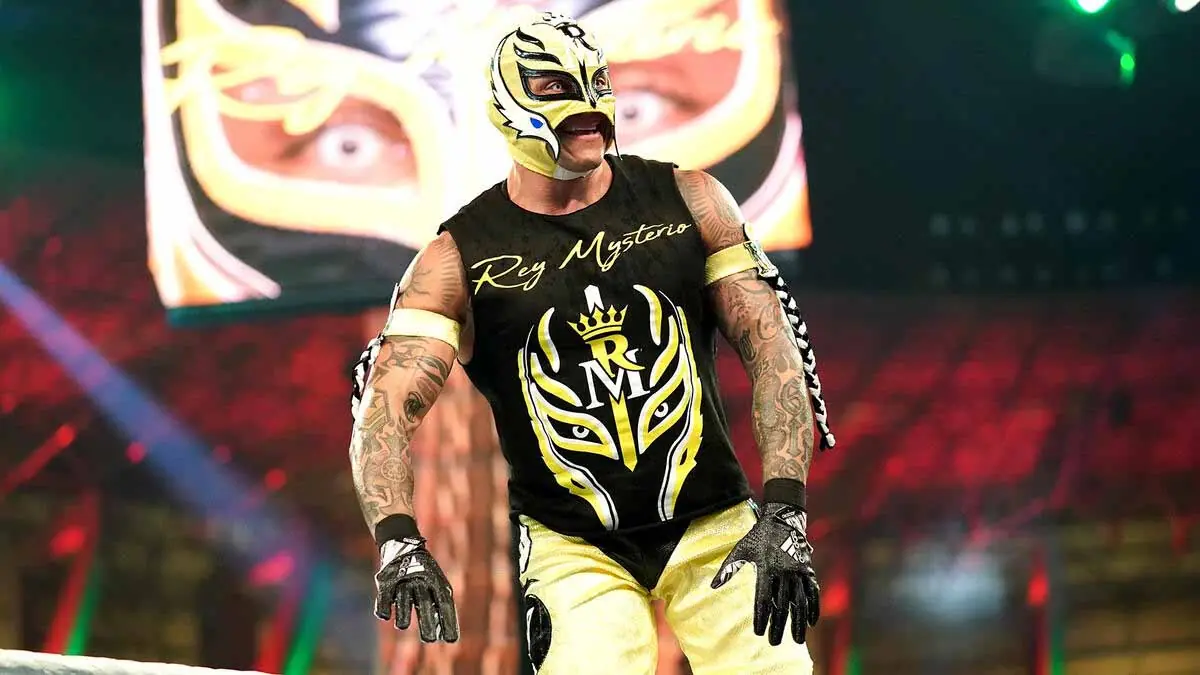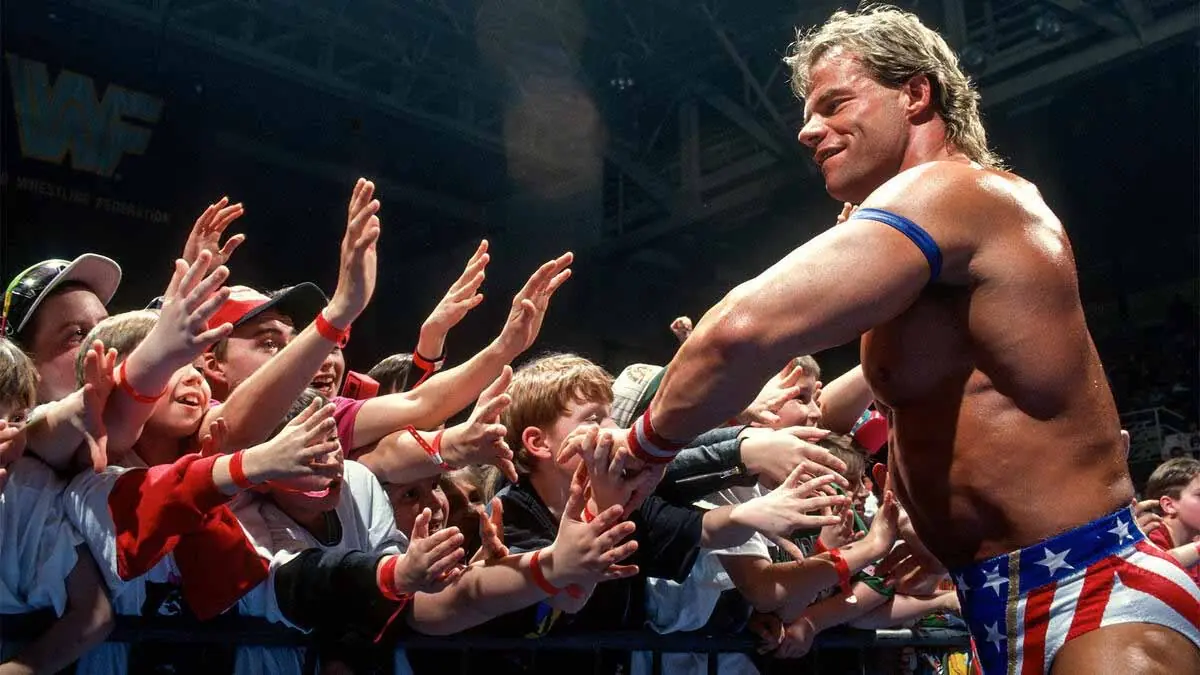Don Frye has always been a man of action and not words; as such, don’t expect much of a speech from him when he accepts the 2024 George Tragos Award at the upcoming George Tragos/Lou Thesz Hall of Fame induction.
The ceremony, which takes place from July 18-20 at the Dan Gable Museum in Waterloo, Iowa, is to honor the men and women who have made positive contributions to professional wrestling by way of their backgrounds in either amateur wrestling or shootfighting. The Class of 2024 has a number of honorees including Tony Garea (Jack Brisco Spotlight Award), Arn Anderson (Frank Gotch Award), Tito Santana (Lou Thesz Award), Tony Schiavone (Gordon Solie Award), Al Getz (Jim Melby Award), and Tom Prichard (Verne Gagne Trainer Award), with the sole inductee being Greg Gagne.
And among them is one of the most famous and well known combat sports specialists and a pioneering force in modern mixed martial arts in Frye, who at one time went by the nickname “The Predator.”
SlamWrestling.net reached out to the 58-year-old retired fighter to discuss his contributions to not just wrestling but combat sports in general. And while Frye is happy to be honored for what he did in professional wrestling he also found the honor “confusing” since he saw himself as worth a lot more as a professional fighter than as a professional wrestler.
“I was real lucky,” Frye said.
Frye started his fighting career in boxing and finished with a 2-5-1 record. That career lasted a mere 16 months and when it ended Frye returned to a simpler life. He spent several years shoeing horses and fighting fires and didn’t see all that much else happening for him. But after an incident at a psychiatric facility went awry – he broke a patient’s arm while trying to restrain him – it seemed like Frye would find an equally rewarding career fighting people instead of fires.
After training in judo until he reached the level of second dan black belt, Frye made his way to the world of mixed martial arts and became an instant tour de force. He won his first six fights in a row before suffering his first loss at the hands of Mark Coleman. He then embarked on a six-year, nine-fight winning streak that went from November 1996 to November 2002. The reason his fights grew more spread apart around this time was because Frye was scouted by Antonio Inoki and entered pro wrestling which, to Frye, was a different creature altogether.
“I grew up watching [Terry] Funk, [Ric] Flair, and [Bruno] Sammartino. I wanted to be like those guys,” Frye said. “I did Flair and Funk type moves at first. But later they told me they wanted me to be more of a Bruiser Brody-type since he was bulletproof. But they only gave me simple suggestions and I didn’t get that since I needed to hear it directly.”
Frye wrestled exclusively in Japan where pro wrestling was more sport-driven and involved far less character work. For 99% of his career Frye wrestled for Inoki, either in New Japan Pro-Wrestling, in one of his offshoots like Universal Fighting arts Organization (UFO) or Inoki Genome Federation (IGF), or on one of his special Inoki Bom-Ba-Ye shows. The small handful of non-Inoki shows on which Frye wrestled were managed and produced by Keiji Muto, such as Frye’s last wrestling match in 2019 on a show called Pro-Wrestling Masters or his 2003 Triple Crown Heavyweight title challenge against Toshiaki Kawada in a Muto-run All Japan.
On one hand, Frye found it some easily to adjust to pro wrestling in a physical sense. All he had to do was, in his own words “lift a bunch of weights until I gained 30 pounds.” This brought the lithe Frye from 212 pounds to a much bulkier 242 pounds, which allowed him to complete more credibly in New Japan’s heavyweight division. And while he spent most of his time in tag matches – which usually involved the likes of Brian Johnston or Scott Norton, whom Frye praises to the moon for “carrying” him – he also had several big singles matches against the likes of Muto, Tatsumi Fujinami, Jushin Thunder Liger, Naoya Ogawa, Kensuke Sasaki, and even against Inoki himself.
“It was a privilege to work for NJPW. Those guys are great,” Frye said.
The biggest of those singles matches, without a doubt, was his four-minute affair with Inoki, which took place in front of a reported 70,000 people in the Tokyo Dome for what was billed as Inoki’s last official match. Though it wasn’t the most thrilling of match-ups, the show was an overwhelming success as it drew the equivalent of $7-million USD, which made it the biggest financial success in the world up to that point in time.
These big singles matches of Frye’s – many of which were promoted as “different style fights” – were integral to New Japan’s crossover with MMA during a time when both disciplines were taking Japan by storm while pro wrestling was slowly fading away as something old and dated.
Still, Frye is happy for the recognition fans are giving him and credits those that helped train him to be a pro-wrestler. Specifically, Frye credits Masa Saito, Brad Rheingans, and Brian Johnston, for helping him succeed.
At the same time as Frye the MMA fighter was trying his hand at pro wrestling, so too were pro wrestlers trying their hands at fighting in MMA, though sometimes solely at promoters’ behest. Though most of these wrestlers struggled to bounce back from at times resounding and lopsided losses (the fiascoes surrounding the likes of Shinya Hashimoto and Yuji Nagata tend to come to mind), there was one wrestler who lost in an MMA fight and not only left the match better than he entered but had an unexpected influence on the entire pro-wrestling landscape.
That wrestler’s name is Yoshihiro Takayama, and he fought Don Frye at Pride 21 in a contest that, to this day, is hailed as one of the most exciting fights in MMA history.
This fight sequence, which has since become known as the Frye/Takayama spot, has been copied countless times in a wrestling context with two opponents standing in the ring together, holding each other’s heads and trading punches. Though it is one of the more surreal sequences found in today’s pro wrestling world, its origin is one of the realest and most unbelievable moments in the history of combat sports in general.
Dave Meltzer wrote about it in the July 8, 2002 Wrestling Observer Newsletter:
Then came Don Frye vs. Yoshihiro Takayama. Keep in mind the original reports on this battle of two of Japanese pro wrestling’s biggest names, was that it was one of the great fights in history. That usually sets one up for disappointment watching the tape a week later. Well, you could have said the first two minutes of the match were the greatest two minutes in the history of MMA, boxing, kickboxing, pro wrestling and just about anything short of sex, and not have been disappointed, because it was. I’ve seen tapes of the greatest boxing matches in history, what was purported to be the most exciting round in the history of Muay Thai, every great pro wrestling match ever filmed boxing, and those two minutes beats any of them. [Bas] Rutten was stunned, saying that never in his life had he ever seen anything like it.”
Frye continued fighting although his fights grew fewer and father apart. He managed five more wins over the following nine years, including one to sumo legend Akebono, before finishing his fight career in December 2011 with a final career record of 20 wins, nine losses, one draw, and one no-contest.

Although most of his career has seen him face off in cages against other similarly-trained fighters, Frye remains happy with his wrestling achievements and the recognition that comes with them, in spite of the physical, political, and stylistic challenges he experienced. As such, he’s happy to be honored in Waterloo, Iowa, and looks forward to meeting friends from all walks of life, whether they’re fans of his fights, his podcast with Dan “The Beast” Severn, or his other endeavors.
“Bring a couple of friends [to Iowa]. It’ll be a good time,” he vowed.
TOP PHOTO: Don Frye at The Big Event fan fest on The Big Event fan fest on Saturday, March 5, 2022, at Terrace on the Park, in Queens, NY. Photo by George Tahinos, https://georgetahinos.smugmug.com
RELATED LINKS



